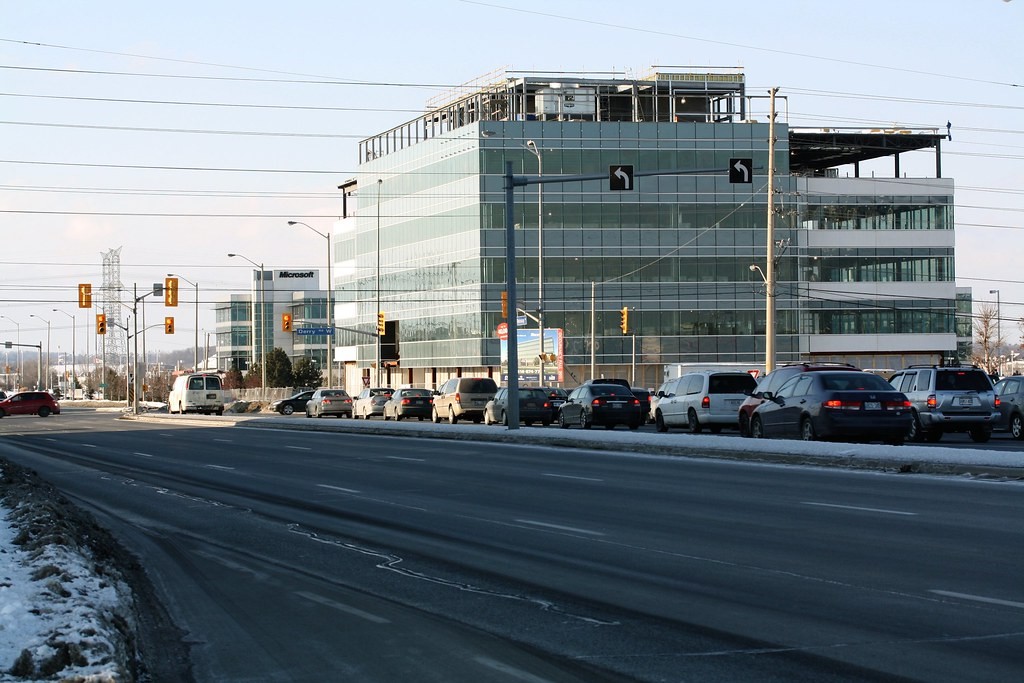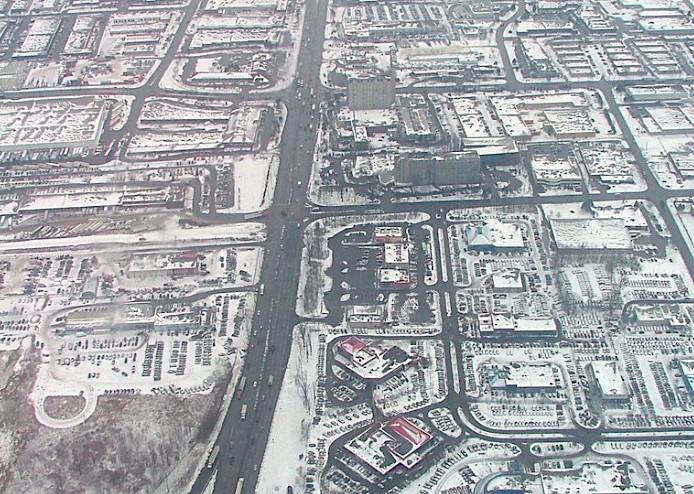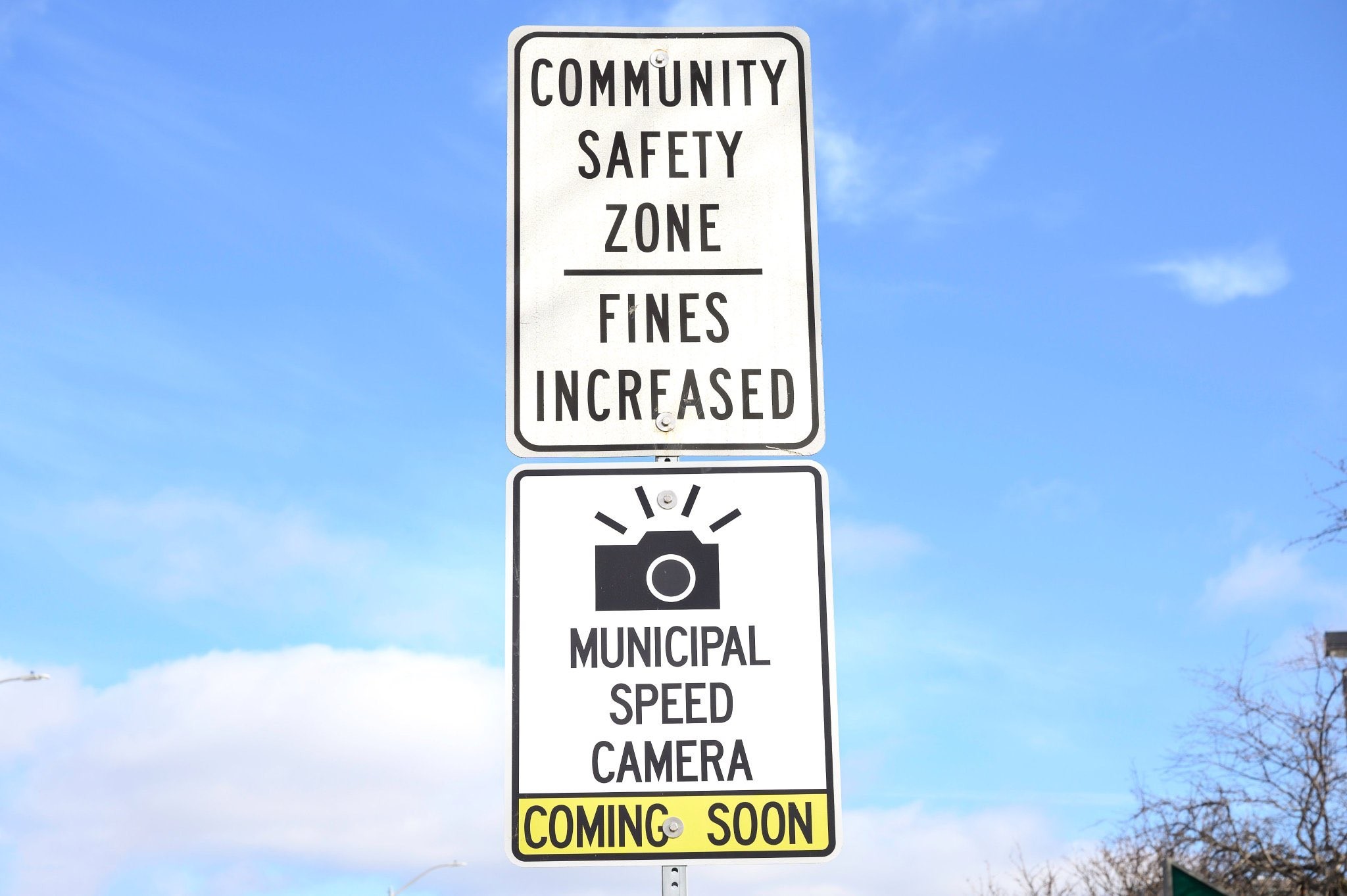
Peel’s piecemeal approach to road safety won’t lead to walkable communities
For those behind the wheel, driving between Brampton and Mississauga can be freeing. Take Dixie Road, for example, one of many north-south routes connecting the two cities, where drivers can hit speeds between 50 and 80 km/h.
Straight as an arrow, the regional road begins on the edge of Lake Ontario at an intersection of Lakeshore Road. At first, drivers are limited to 50 km/h — the default for city roads in Peel. Quickly, as feet hit the gas, the speed limit increases to 60 km/h and, soon after, 70. The limit is lowered back to 60 km/h as it passes through Brampton, reaching a peak of 80 km/h as Caledon approaches.

Drivers travelling on Dixie Road, pictured above, in Peel can hit speeds between 50 and 80 km/h
For a driver located in Mississauga and headed to Caledon for a meeting, this is perfect: it allows for shorter travel time and makes the gas tank last longer. For everyone else, outside the bubble of the car, there are few benefits.
Speedy regional roads like Dixie crisscross both Brampton and Mississauga, with traffic on Peel’s biggest moving as fast as 80 km/h. Mayfield Road, Queen Street and Steeles Avenue are just a few of the fast-moving, car-friendly roads the region has built.
Speed limits on regional roads in Peel range from 40 to 80 km/h
As both Brampton and Mississauga look towards sustainable futures and lofty emissions targets in time for 2050, the advantages drivers enjoy on these roads are fast being outweighed by the negatives they bring.
Last year, Brampton approved an Active Transportation Master Plan that focuses on bringing cycling and walking to city streets, while Mississauga’s 2019 Transportation Master Plan holds similar goals. Both cities have also committed to Vision Zero strategies to reduce traffic fatalities and hope to build complete communities that allow residents to access local amenities by foot.
Fast moving roads with multiple lanes dedicated to drivers are a barrier to all of these goals. Crossing large, rapidly moving streams of traffic is challenging. Cycling is also massively discouraged by the danger of cars driving close to highway speeds. Residents gravitate towards vehicles as polluting and noisy traffic takes away from the pleasure of walking.
The basic impact of this is illustrated by the 2016 census. In Mississauga, less than 3 percent of residents walk to work and 0.03 percent of the population cycle. In Brampton, 1.6 percent of the residents regularly walked to their place of employment and 0.025 of people chose to use the bike. High speed roads in both cities mean cycling is not an option for the amatuer enthusiast, with almost no protection from the dangers of traffic. Sprawl can make the distance between point A and B too far to walk.
The City of Brampton is currently in the process of notifying drivers that Automated Speed Enforcement (ASE) is coming to some streets. The photo radar system will issue tickets to drivers who exceed speed limits, which is permitted by provincial legislation introduced late last year. New rules allow municipalities to introduce these systems in school zones and designated community safety zones where the speed is below 80 km/h.
Brampton unveiled its first warning sign (required 90 days before tickets are issued) on Dec. 19 and expects to begin issuing tickets in May or June. Mississauga, an original pioneer of the system, is hoping to designate its community safety zones and have warning signs installed before the summer.

ASE enforces speed limits already established. While an efficient way to deal with speeding drivers, it does not combat the issue of fast roads as a whole.
At the heart of establishing speed limits in a city should be the rate at which pedestrian injury can be prevented. The World Health Organization says “controlling vehicle speed can prevent crashes happening and can reduce the impact when they do occur, lessening the severity of injuries sustained by the victims.” For each kilometre faster a vehicle travels, the risk of crash and injury increases by 3 percent. It is possible to argue that, alongside this, the propensity of cyclists and walkers to use the roads also decreases as speed increases — no one wants to wander along the edge of a highway.
There's a major correlation between car speed and pedestrian fatality
For cars travelling below 30 km/h, the risk of death is below 10 percent. As the speed increases, so does a car’s stopping distance and the risk it will kill any pedestrian or cyclist it collides with.
Councillors in Brampton and Mississauga demonstrate a basic understanding of this, illustrated by a willingness to lower road speeds over the past few years. For example, in the summer of 2019, a portion of Mississauga Road in Brampton was reduced from 80 km/h to 70, while Bovaird Drive was dropped from 70 km/h to 60. Similarly, Mississauga also announced it would be reducing the speed limit from the default 50 km/h to 40 km/h in 11 different neighbourhoods.
While this is good news for individual roads, it isn’t for the city as a whole.
Pushback from councillors and the public shows the need to create a positive case for how slower driving inherently links with good city-building. In Brampton, 97 people signed a petition calling for speed limits to be increased back to 70 km/h on Bovaird drive, suggesting a lack of understanding around the benefits. Meanwhile, in Mississauga, Councillor Pat Saito, who chairs the Road Safety Committee, has previously told The Pointer uniform speed limit changes aren’t possible.
“In cities like Mississauga, where we really have wider roads [...] we can't just go and say ‘I'm going to narrow every single road and reduce the speed limit to 30 [km/h],’” Saito said. “It's not physically possible from a financial perspective and it's not environmentally possible because [of] the gridlock [slower, narrower roads would cause].”
Yet, if both cities want to improve their walkability, get residents out of cars and reduce pedestrian deaths, blanket changes are key.
The piecemeal approach of slowing streets down after residents ask keeps councillors in office and individuals happy. But it does not build towards a walkable future, with drivers speeding up and slowing down throughout the city at random and some streets more walkable than others.

In Glasgow, Scotland, nearly every road in the city has had speeds lowered to 20 m/h (about 30 km/h)
Across the Atlantic in Scotland, Glasgow has recently set a bold standard. In a city with a population of roughly 600,000, council voted to reduce the speed of almost every road to 20 m/h (about 30 km/h). The reduced speed limit will be applied to all residential streets, the city centre and major shopping areas. The aim was to reduce noise and congestion to make cycling and walking safer, while also reducing the city’s emissions.
Glasgow’s one-size fits all approach is out of step with traditional Canadian road design, but comes with significant benefits. It reduces the number of people cutting through cities on anything other than highways, leading to fewer fast drivers. And, crucially, it also allows residents, drivers and developers to know where they stand.
If the speed is the same across an entire city, planning can confidently integrate cycling and walking into day-to-day use. Developers can pitch residential units with lower parking requirements. Independent shops can open knowing there is regular foot traffic outside. Transit services can worry less about the last mile of each journey.
The changes Brampton and Mississauga have been phasing in through Vision Zero, speed cameras and active transportation are doubtless welcome. Both city halls are slowly moving to realize the reign of the car can’t continue forever.
However, without a radical approach — something like a complete reduction in speed — both cities are planning pedestrian policies with the car front of mind. They’re compromising between pedestrian needs and the status quo of the car instead of simply starting again. A drastic commitment to change could allow developers and residents to feel safe and imagine a city where drivers take it slow and people want to take a stroll.
Email: [email protected]
Twitter: @isaaccallan
Tel: 647-561-4879
Submit a correction about this story


